
Tritoma is a genus of beetles in the family Erotylidae, the pleasing fungus beetles. It is distributed worldwide, mainly in the Old World. There are over 100 species.
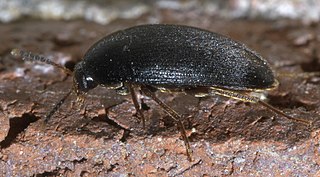
Tetratomidae is a small family of beetles sometimes called polypore fungus beetles. The family consists of several genera, most of which used to be in the family Melandryidae. Tetratomidae can be found worldwide.
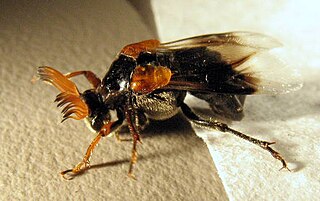
Ripiphoridae is a cosmopolitan family of some 450 described species of beetles sometimes called "wedge-shaped beetles". Ripiphoridae are unusual among beetle families in that many species are hypermetamorphic parasitoids, an attribute that they share with the Meloidae. Members of the family differ in their choice of hosts, but most attack various species of bees or wasps, while some others attack cockroaches or beetles. Many species of Ripiphoridae have abbreviated elytra, and flabellate or pectinate antennae.
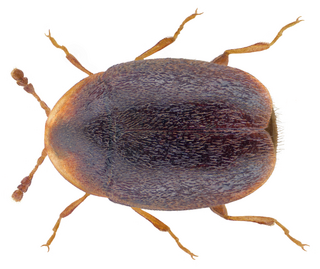
Corylophidae is a family of minute hooded beetles, sometimes called minute fungus beetles, in the superfamily Coccinelloidea. There are about 18 genera and at least 120 described species in Corylophidae. They feed on microfungi such as molds, and are often found associated with bark, as well as in leaf litter and other decaying vegetation. In older literature, the family name was often given as Orthoperidae.

Calathus is a genus of ground beetle native to the Palearctic, the Near East and North Africa. There are at least 190 described species in Calathus.
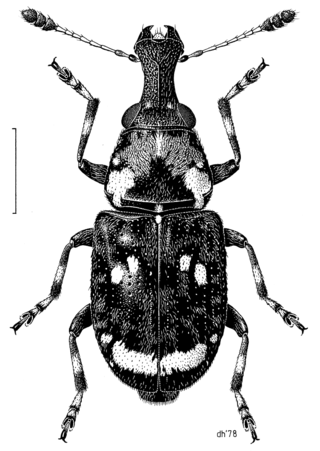
Anthribidae is a family of beetles also known as fungus weevils. The antennae are not elbowed, may occasionally be longer than the body and thread-like, and can be the longest of any members of Curculionoidea. As in the Nemonychidae, the labrum appears as a separate segment to the clypeus, and the maxillary palps are long and projecting.
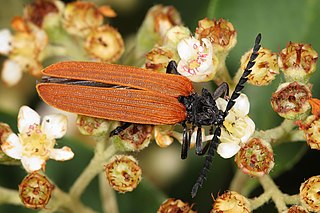
The Lycidae are a family in the beetle order Coleoptera, members of which are commonly called net-winged beetles. These beetles are cosmopolitan, being found in Nearctic, Palearctic, Neotropical, Afrotropical, Oriental, and Australian ecoregions.

Clivina is a genus of ground beetle native to the Palearctic, the Nearctic, the Near East and North Africa. There are more than 600 described species in Clivina.

Kateretidae also known as short-winged flower beetles are a family of beetles in the superfamily Cucujoidea. There are 10 extant and 4 extinct genera, and at least 40 described species. They are found worldwide except in New Zealand. Adults are anthophagous, feeding on flowers, while the larvae are spermatophagous inside the flower corolla.
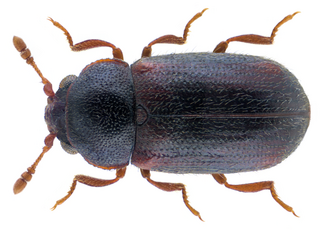
Sphindidae is a family of beetles, in the suborder Polyphaga. They are also known as slime mold beetles due to their exclusive feeding on slime molds during adult and larval stages, other aspects of their life history are obscure. Palaeontological discoveries since 2015 have added to the geologic history of Sphindidae, including the discovery of Libanopsis, placed in the extinct subfamily Libanopsinae.
Conotelus obscurus, the obscure sap beetle, is a species of sap-feeding beetle in the family Nitidulidae. It is found in North America.
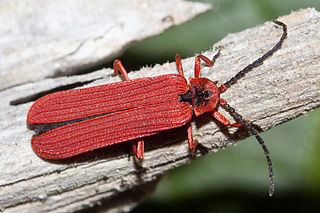
Dictyoptera simplicipes is a species of net-winged beetle in the family Lycidae. It is found in North America.
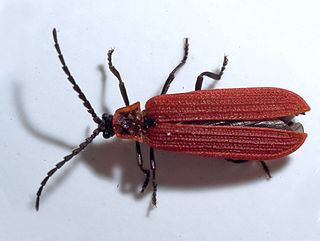
Erotinae is a subfamily of net-winged beetles in the family Lycidae. There are about 10 genera and 19 described species in Erotinae.

Dictyoptera is a genus of net-winged beetles in the family Lycidae. There are at least four described species in Dictyoptera.

Conotelus is a genus of sap-feeding beetles in the family Nitidulidae. There are at least four described species in Conotelus.
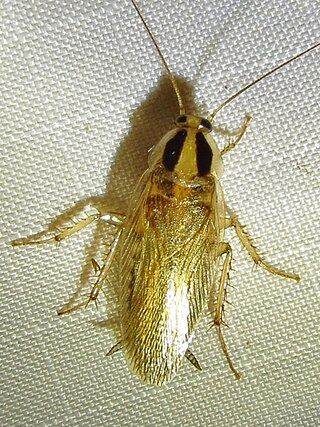
Blattella vaga, the field cockroach, is a species of cockroach in the family Ectobiidae. It is found in Europe and Northern Asia, Central America, North America, and Southern Asia.

Nitidulini is a tribe of sap-feeding beetles in the family Nitidulidae. There are about 10 genera and at least 20 described species in Nitidulini.

Aciliini is a tribe of predaceous diving beetles in the family Dytiscidae. There are 7 genera and at least 69 described extant species in Aciliini, along with 5 fossil species.
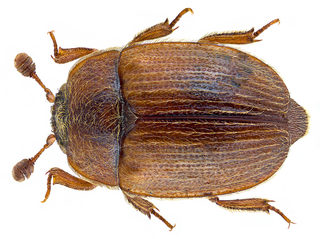
Pocadius is a genus of sap-feeding beetles in the family Nitidulidae. There are about nine described species in Pocadius.
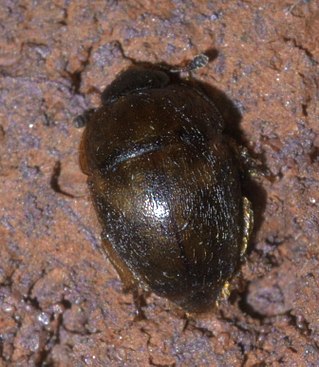
Amphicrossus is a genus of sap-feeding beetles in the family Nitidulidae. There are about nine described species in Amphicrossus.




















